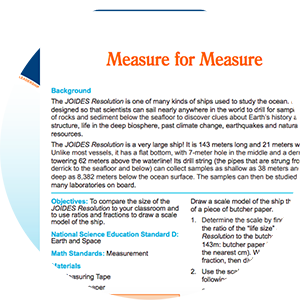Actvity Summary: Examine and match whole thin section photos to the cores from which they were sampled by defining textural characteristics.
The common minerals that make up most of the oceanic crust are called rock-forming minerals. They come from the upper mantle and are distributed at hotspots and spreading centers. The two most common rock types in ocean crust are gabbros that crystallize beneath the surface and basalts that are formed above the surface. Through detailed visual description and geochemistry, we have come to recognize the mineralogy and petrology of gabbros, basalts, and other types of oceanic crust.
Thin sections are tiny samples that are mounted on a glass slide and abraded (ground) down until the sample is just a few hundredths of a millimeter thick. When placed on a polarizing microscope, mineralogists and petrologists can magnify the sample, examine, and describe crystal sizes, shapes, colors, textures, relative percentages, and other characteristics. Accurate, ne-scale thin section description requires years of practice with special keys and atlases.
- Standard D: Life science
- Standard G: Science in personal and social perspectives
